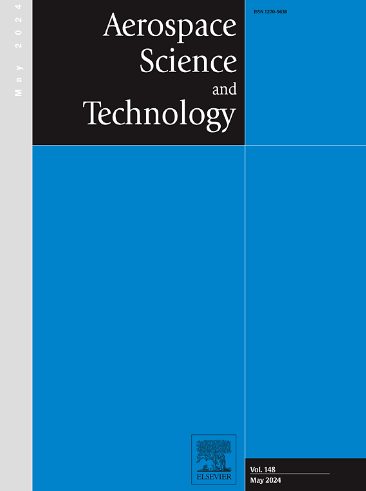Study on cryogenic cavitation and its temperature-pressure correlated characteristics of methane pump in rocket engine
IF 5
1区 工程技术
Q1 ENGINEERING, AEROSPACE
引用次数: 0
Abstract
The harsh and complex working environment such as low temperature, high pressure and high speed in the turbopump brings great challenges to the working performance, operation stability and structural safety of the turbine pump device. In this research, the cryogenic cavitation of methane pump in liquid oxygen-methane rocket engine is studied by the combination of experiment and high-performance computing cluster numerical simulation. The unsteady flow calculation of the methane pump is carried out to reveal the cavitation and its temperature-pressure correlated characteristics of the methane pump in different operation conditions. A cryogenic cavitation model considering the thermal effect of cryogenic medium is established and the cryogenic cavitation simulation of methane pump is carried out. The hydraulic and cavitation performance experiments of methane pump are also performed. It is demonstrated that: 1) The volume fraction and cycle of cavitation in pump will decrease exponentially with the increase of inlet pressure. The cavitation cycle under low inlet pressure (0.146 MPa) is five times of that under high inlet pressure (0.3 MPa). 2) The decrease of inlet pressure will lead to the decrease of Strouhal number, which will weaken the unsteady cavitation effect of methane pump and enhance the influence of fluid inertia effect on cavitation. 3) Cavitation in inducer is mainly dominated by the backflow vortex cavitation (BVC) and the blade cavitation (BC) under lower inlet pressure condition, while the backflow vortex cavitation (BVC) and the tip vortex (TVC) cavitation are the main contribution in higher inlet pressure conditions. Through the study of cryogenic cavitation under harsh pump working conditions is benefit to reveal the cavitation mechanism of methane pump, and provide theoretical basis and technical support for the improvement design of turbopump.
火箭发动机甲烷泵的低温气蚀及其温压相关特性研究
涡轮泵低温、高压、高速等恶劣复杂的工作环境给涡轮泵装置的工作性能、运行稳定性和结构安全性带来了巨大挑战。本研究采用实验与高性能计算集群数值模拟相结合的方法,对液氧甲烷火箭发动机甲烷泵的低温气蚀进行了研究。通过对甲烷泵的非稳态流动计算,揭示了甲烷泵在不同工况下的气蚀及其温压相关特性。建立了考虑低温介质热效应的低温气蚀模型,并对甲烷泵进行了低温气蚀模拟。同时还进行了甲烷泵的水力和气蚀性能实验。实验证明1) 泵内汽蚀的体积分数和周期随入口压力的增加而呈指数下降。低入口压力(0.146 兆帕)下的汽蚀周期是高入口压力(0.3 兆帕)下的五倍。2)入口压力的降低会导致斯特劳哈尔数的降低,从而减弱沼气泵的非稳态空化效应,增强流体惯性效应对空化的影响。3)在较低入口压力条件下,诱导器中的空化主要以回流涡旋空化(BVC)和叶片空化(BC)为主,而在较高入口压力条件下则以回流涡旋空化(BVC)和尖端涡旋空化(TVC)为主。通过对恶劣泵工况下低温气蚀的研究,有利于揭示甲烷泵的气蚀机理,为涡轮泵的改进设计提供理论依据和技术支持。
本文章由计算机程序翻译,如有差异,请以英文原文为准。
求助全文
约1分钟内获得全文
求助全文
来源期刊

Aerospace Science and Technology
工程技术-工程:宇航
CiteScore
10.30
自引率
28.60%
发文量
654
审稿时长
54 days
期刊介绍:
Aerospace Science and Technology publishes articles of outstanding scientific quality. Each article is reviewed by two referees. The journal welcomes papers from a wide range of countries. This journal publishes original papers, review articles and short communications related to all fields of aerospace research, fundamental and applied, potential applications of which are clearly related to:
• The design and the manufacture of aircraft, helicopters, missiles, launchers and satellites
• The control of their environment
• The study of various systems they are involved in, as supports or as targets.
Authors are invited to submit papers on new advances in the following topics to aerospace applications:
• Fluid dynamics
• Energetics and propulsion
• Materials and structures
• Flight mechanics
• Navigation, guidance and control
• Acoustics
• Optics
• Electromagnetism and radar
• Signal and image processing
• Information processing
• Data fusion
• Decision aid
• Human behaviour
• Robotics and intelligent systems
• Complex system engineering.
Etc.
 求助内容:
求助内容: 应助结果提醒方式:
应助结果提醒方式:


